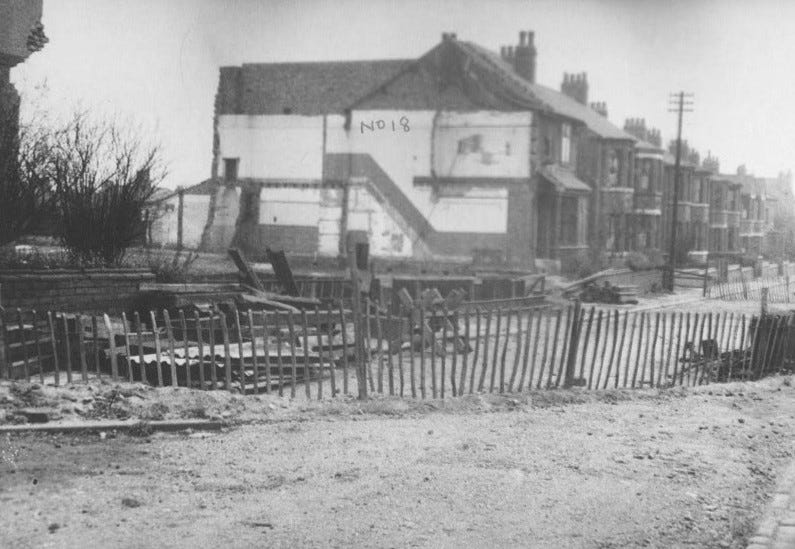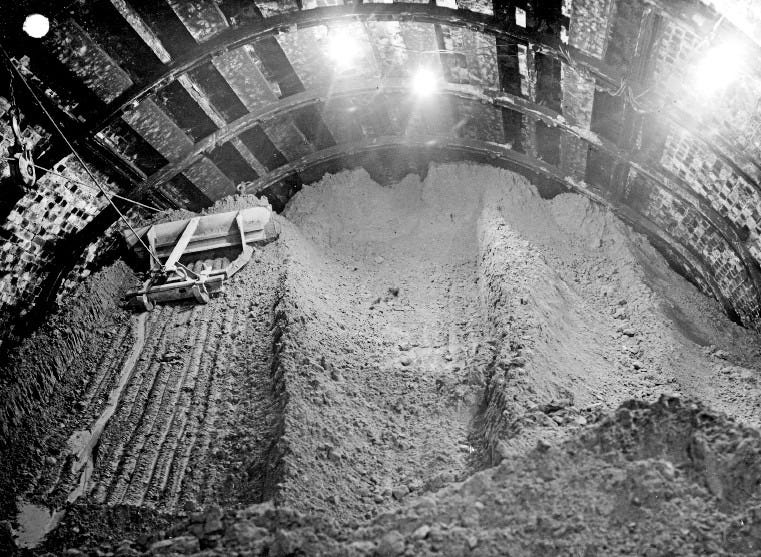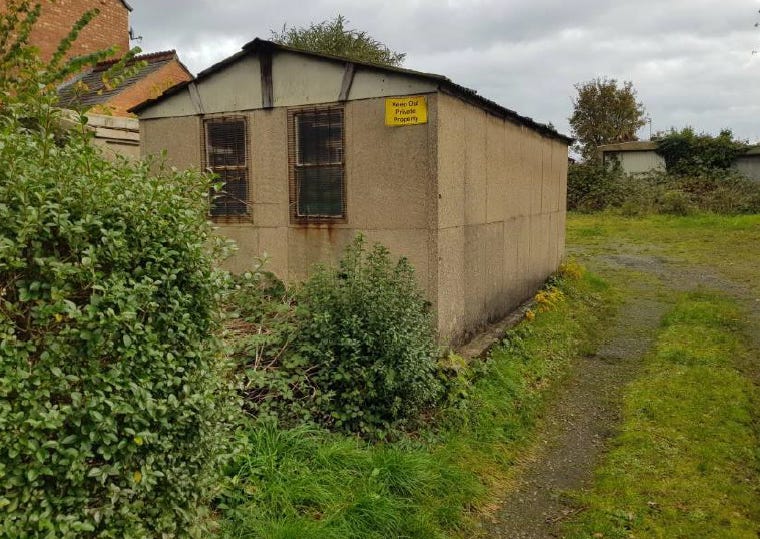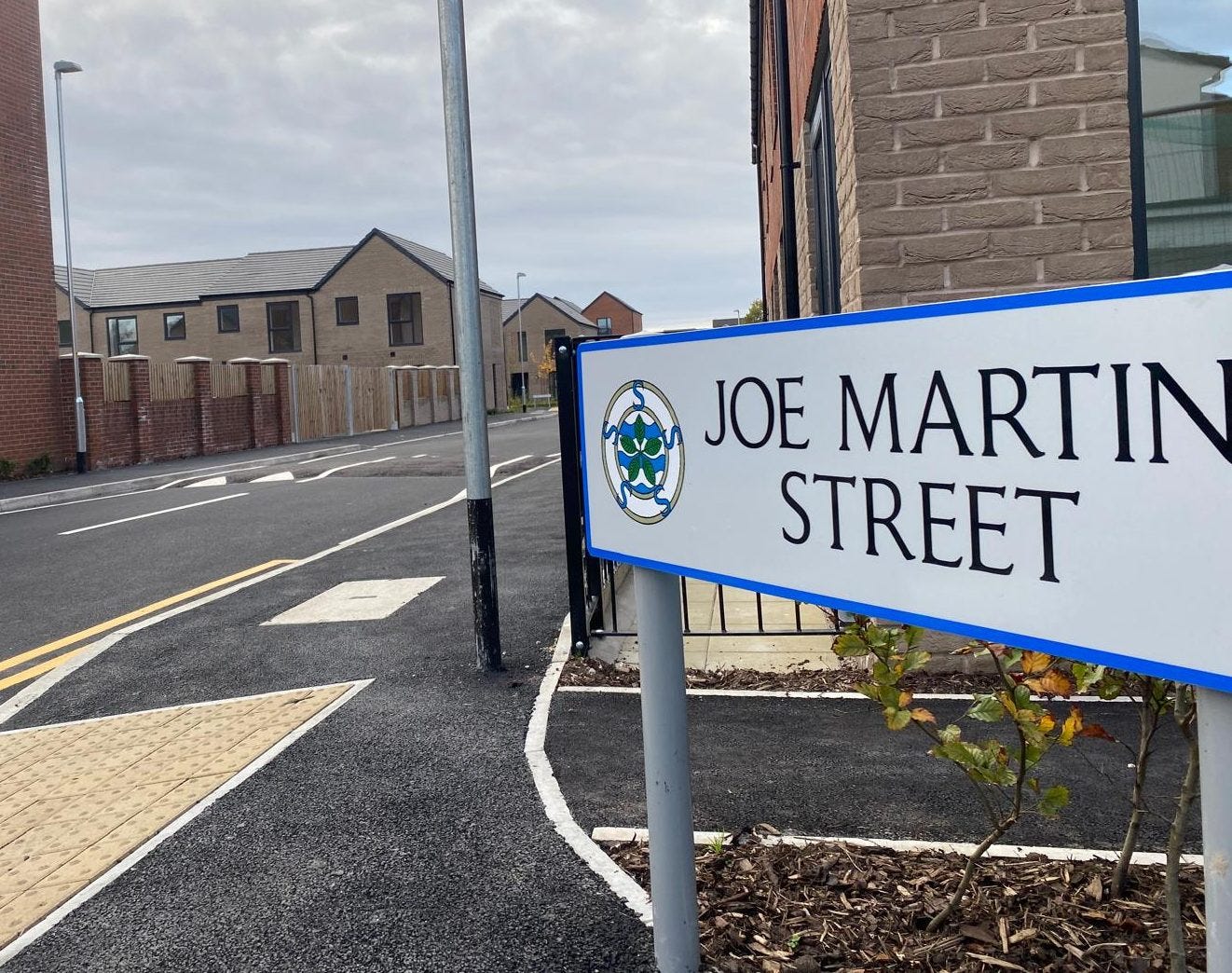"The horror everyone felt" - Remembering the Clifton Hall Tunnel collapse
71 years on we look at a catastrophe that hit Swinton, when five people went to bed never to wake up again.
In this week’s newsletter, we look at the tragedy of the ‘Black Harry’ tunnel collapse that took the lives of five people over 70 years ago.
Plus this week’s top news includes the latest effort to save Salford Lads Club, the renaming of a Salford street, a whimsical performance of Here We Go Again at the Lowry, and a Salford boxer’s Olympic aspirations.
If you enjoyed it, please forward this newsletter to someone who might enjoy it. Got a tip? Let us know at Now@Salford.ac.uk
Clifton Hall Tunnel collapse: 70 years after tragedy
By James Richardson and Alfie Mulligan
The morning of Monday 28 April, 1953, on Temple Drive in Swinton was like any other. At 5am dawn was breaking and with it, the arrival of the dawn chorus. Perhaps a milkman starting his round might have been heard, even the odd local on their way to work.
However that relative silence was to be shattered. At 5:35am two houses, number 22 and 24, collapsed into the ground without warning, taking the lives of five residents.
The Clifton Hall Tunnel – otherwise known as ‘Black Harry Tunnel’, supposedly after the foreman of the gang who dug it out – lay beneath the houses. It had catastrophically failed, plunging the two homes up to 20 feet into the ground, completely destroying them. With them went Fred Potter, 87, and his wife Clara, 73. Next door were Sara Salt, 69, her daughter Emily, 45, and Jean, 28. All were instantly killed; some were discovered still in their beds.
Pat Singleton, now 81, was ten at the time and recalls how the disaster hit the local community – and some stern words from her mother about venturing close to the site.
“I just remember the horror that everyone felt, people going to offer help,” says Pat.
“My mother giving me strict instructions to keep away, or "keep out of the road of tha' workers”.
“I do remember going with my friends and looking at the wreckage – against my orders – and being told to ‘bugger off’ out of it.”
John Marchant, who was seven at the time and lived on Park Avenue, recalls two classmates of Grosvenor Road Primary School living within yards of the collapse.
Images of the aftermath show the houses completely swallowed by the ground while nearby buildings stand almost completely unscathed. The tunnel collapse had left a 20-foot-deep crater filled with timber, tiles, brickwork and sections of roofing. Numbers 20 and 26 Temple Drive were badly damaged (and later demolished). 77-year-old Agnes Williams, at number 26, was left lying near the pavement, buried in rubble up to her waist. Her maid Frances Watson was found standing against the wall of her devastated bedroom.
An lnspector McLennan's eye-witness account mentions a ‘rush of air’ that accompanied the collapse - clearly indicating the ‘violence’ of the incident. As the dust settled and it became clear the underground train tunnel had collapsed there were inquests and accusations. How could this have happened?

The Clifton Hall Tunnel was constructed and opened in 1850 and was formed part of the Patricroft to Molyneux Junction line that ran under Swinton. The new line was to connect Liverpool with Lancashire’s great industrial towns: Wigan, Bolton, Bury. Part of the great ‘Railway Mania’ dash for infrastructure in the 1840s, the line had long attracted scrutiny over its construction as rival firms raced to compete over transport links.
The report into the tunnel collapse noted its fraught construction: “The sand in some places approaches the nature of a quicksand and in these parts a good deal of difficulty was experienced in making the tunnel and much water still passes through the brickwork,” it reads. It found that the line was also built over old mineworks.
Nevertheless ‘Black Harry’ served as an important rail link to Radcliffe via the Clifton Viaduct, being used largely for freight, before being temporarily closed because of the conflict of the Second World War.
Reopening in 1947, the tunnel was never again used by passenger trains – but the area around the tunnel had seen major developments. Land that was once used for agricultural purposes had been urbanised and incorporated as the town of Swinton in 1909 – with a small cul-de-sac of semi-detached dwellings known as Temple Drive constructed directly over the tunnel.
However, unbeknownst to the residents of Temple Drive, under their houses the structure was getting weaker and weaker.
Black Harry was in constant need of maintenance and underwent seven significant repairs prior to its collapse. The repeated work had led to the structure having irregular brickwork and construction joints throughout - while the tunnel plans were lost in a WWII air raid and subsequent fire, incidents that contributed significantly to the lack of understanding of the tunnel’s inherent flaws.
On the April 15, 1953, a labourer and inspector known as EC Nash had found a small collection of rubble lying on the line. The brickwork had begun to shed its lining and had peeled away. Following the inspection, all rail traffic had been halted to allow repairs to the affected area – 15 days before the tragic incident.
Inspections showed that the crown of the arch was sinking – and it continued to sink over the next two weeks. Above, the residents of Temple Drive were still completely oblivious and there were misunderstandings as to exactly what was happening above the brickwork.
A report compiled in 1954 concluded that timber placed in the tunnel as a temporary measure during construction had gradually degraded due to damp conditions, meaning it was unable to bear the weight of two hundred tonnes of wet sand above.
Further investigations revealed a letter that indicated required work to strengthen the tunnel was repeatedly put off for fear of closing the tunnel while in use.
The report, by Brigadier Charles Ardagh Langley, on behalf of the Minister of Transport, indicated that the tunnel was not beyond repair, however the decision was taken to close the tunnel permanently.
Several years after the collapse it was decided to fill in the tunnel with waste from the nearby collieries, with the tunnel subsequently buried to public view. The houses that were destroyed in the collapse were later replaced by a collection of garages that now stand in their place.
There is little evidence of the tunnel – or tunnel collapse – left. The two tunnel portals remain but are scarcely recognisable, although a memorial commemorates those lost. Black Harry still remains and occasionally makes its presence felt: in the early 2000s cracks appeared in a local Age Concern outlet, subsequently demolished, and the Register Office building. But plans are afoot to bring down the curtain on the tunnel.
180 years after its construction and over 70 since its fateful collapse, National Highways are in talks with Salford City Council to completely infill Clifton Hall Tunnel. A simple planning application details the plans: “Drilling of boreholes and grouting of voids in two sections of a disused and substantially filled former railway tunnel”.

It’s a strangely unremarkable epitaph to a catastrophe that continues to live in the memory of Salfordians to this day.
John Marchant can still remember the pervading emotions as a “general feeling of astonishment that something like this could happen so close to home.”
For Pat Singleton, 70 years later, memories of the horror of that day are still raw.
“The adults talked of it – saying it shouldn't have happened,” she recalls.
“In school, prayers were said for the souls of the dead.”
“He was a proud Salfordian” – Road renamed in memory of Joe Martin
A Salford road has been renamed to commemorate the work of former council conservation officer Joe Martin.
The Salford Council member, who died 14 years ago, was responsible for managing and preserving many of the city’s environment heritage assets for decades.
However, on Sunday 27 October the council gave his family to unveil the new street sign “Joe Martin Street”. Read more here.
Seven Brothers launches new Salford Lads Club lager to raise money for the iconic institution
Seven Brothers Brewery has released a new Salford Lads Club lager to raise funds for the iconic youth club.
The Ordsall youth centre has launched a £250,000 appeal as it battles to stay open. Read more here.
Everyone left with a smile on their face – Here You Come Again at the Lowry
The latest performance at the Lowry, Here You Come Again was the perfect blend of comedy and joy, perfectly demonstrating how music can transform people’s lives. Read more here.
“I want to be an Olympian”- 21-year-old Salford sensation dreams big after national boxing title win
A 21-year-old Salford fighter has become a national champion of boxing, despite only being in the sport for three years.
Samuel Akinsete, 21, recently became the North West Champion after going undefeated in his last six fights. Read more here.
What’s On in Salford this week
🪔 Diwali Delight: Paper Lantern Workshop - join the celebrations at KargoMKT, as they host a festive craft celebration to light up Diwali by creating you very own paper lanterns. More information can be found here.
🎆Fireworks at Buile Hill Park - three different firework displays will be hosted to suit everyone from Little Sparks and Firecracker shows as well as the main display. The event will take place on Saturday 2 November. Click here for more.
🎆 Fireworks at Prince’s Park - Visit Irlam for a fantastic evening of family-friendly fun and a stunning firework display. The event will begin at 4pm and will have everything for the family. Click here for more.
Our photo of the week: The Monton Lighthouse
The Lighthouse is a 36-foot lighthouse overlooking the moorings at Monton, it has four floors, the highest of which has a 360-degree view.
30 miles away from the coast, the lighthouse was built by Phil ‘Barnacle’ Austin. While it divides opinion, the lighthouse acts as an interesting local landmark and a tourist attraction and had stood in place for just over 20 years.
Thank you for reading
All our journalism is written by people working, studying and living in Salford – for the people of Salford. We'll be adding more exclusive writing to future editions. If you value local journalism sign up: it’s free, easy and we’ll never share your data.







